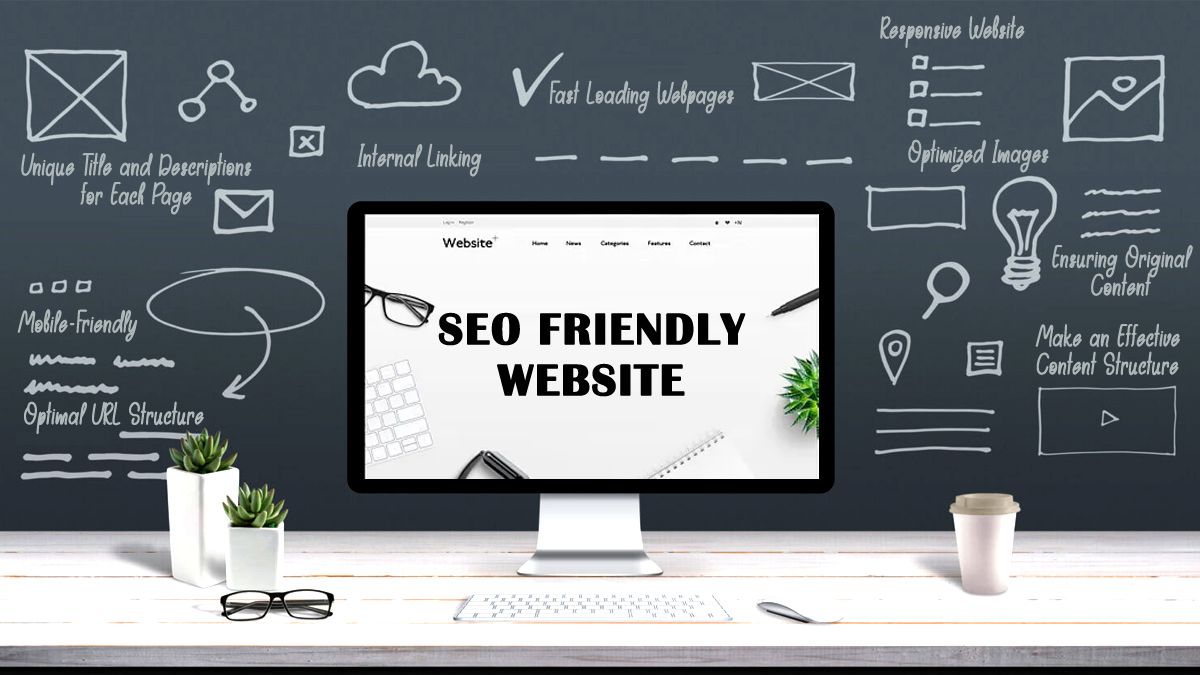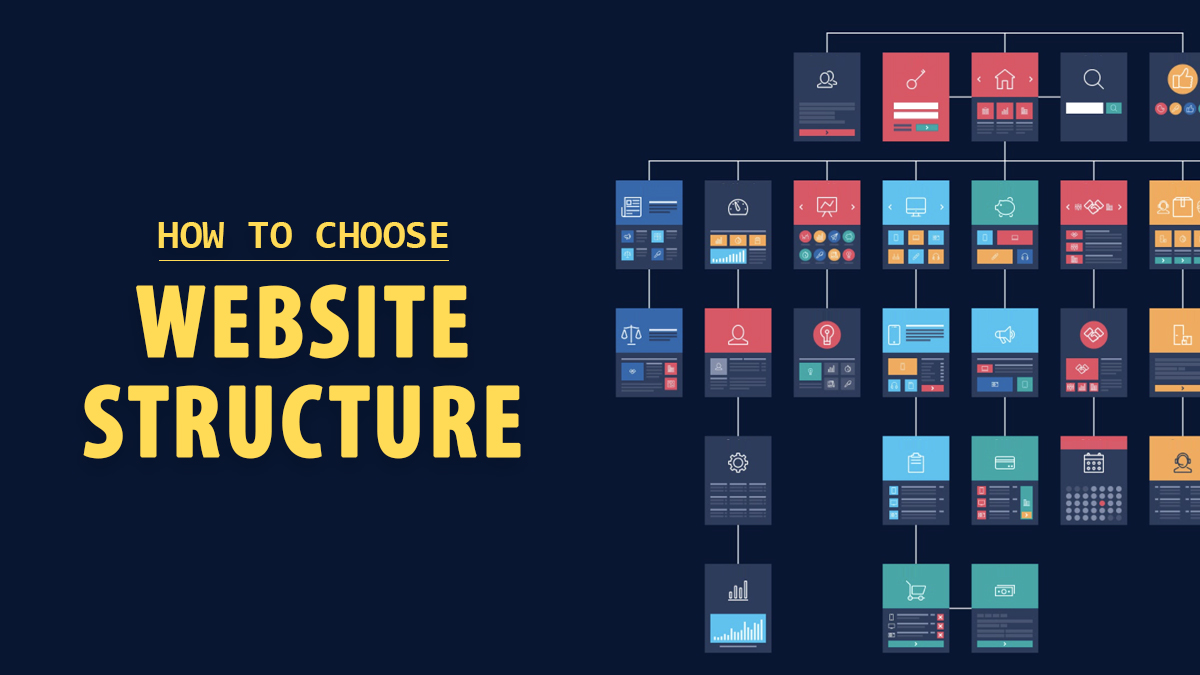Welcome to the world of digital marketing, where an SEO friendly website is essential for increasing organic traffic. For newcomers, terms like SEO-friendly design, technical SEO, and image optimization can seem daunting. This guide aims to demystify the process of building an SEO friendly website, offering step-by-step instructions to enhance your online presence.
What Is an SEO Friendly Website?
An SEO-friendly website is designed to be easily navigable by search engine crawlers, ensuring efficient analysis of its structure and content. When it comes to designing an SEO-friendly website, taking the advice of an expert SEO services provider is invaluable. Their insights and expertise can help you navigate the intricate world of search engine optimization, ensuring your website ranks higher and attracts more organic traffic. Let’s explore the key elements of creating such a website:
Unique Title and Descriptions for Each Page
One of the cornerstones of SEO is having unique meta titles and descriptions for each page. Titles should be concise, ideally between 50-60 characters, and meta descriptions should be brief yet informative, not exceeding 155 characters. These elements are pivotal for effective search engine indexing, offering a snapshot of each page’s content.
Consistent application of this practice across your website lays a solid foundation for improved visibility and user engagement. Crafting distinct and relevant titles and descriptions is vital for optimizing your site’s search engine performance and enhancing the user experience.
Optimal URL Structure
A clear, logical URL structure is vital for both user experience and search engine optimization. Adhere to best practices such as using lowercase letters in permanent links, incorporating descriptive terms, separating words with dashes, and integrating relevant keywords.
This approach not only facilitates ease of navigation for users but also optimizes your site for search engines. By implementing these guidelines, you create a dual-pathway that caters to both human users and search algorithms, significantly boosting the visibility and efficacy of your website in the digital landscape.
Fast Loading Webpages
In the fast-paced digital world, the speed of your webpage loading is critical. Slow-loading pages not only deter user engagement but also negatively impact SEO rankings. To build an SEO-friendly website, a thorough evaluation is needed to identify and implement strategies for enhancing loading speed. Key actions, such as image optimization, are essential for increasing website responsiveness.
By making these adjustments, your website gains a competitive advantage over slower sites, positively influencing search engine ranking algorithms. Prioritizing quick page load times is more than a best practice in today’s high-speed internet environment; it’s essential for maintaining online visibility and ensuring user satisfaction.
Ensuring Original Content
The uniqueness of your content is fundamental to your website’s success. Each page must feature original content, free from plagiarism, to avoid penalties from search engines. Duplicate content can severely harm a site’s SEO standing.
Creating unique, engaging content is crucial not only for meeting search engine standards but also for capturing and retaining your audience’s attention. Consistently original content improves a website’s visibility and credibility, significantly boosting long-term SEO results and establishing your site as a trustworthy resource online.
Also Read: Why Most Websites Failed the September 2023 Google Helpful Content Update (And How You Can Succeed!)
Optimized Images
Oversized images can drastically slow down your website, detracting from the user experience. To address this, prioritize image optimization, which involves reducing image size without sacrificing quality, thereby enhancing website performance. Equally important is the inclusion of alt text for images.
Alt text serves two key purposes: it improves accessibility for users with disabilities and helps search engine crawlers understand the content of the images. Implementing these practices not only ensures a faster, more efficient website but also elevates your site’s SEO, leading to greater visibility and user engagement. This is a strategic approach to ensuring a robust and effective online presence.
Make an Effective Content Structure
For optimal indexing and user experience, it’s vital to establish a robust content structure on your website. Ensure the inclusion of the following elements:
- Header: Situated at the top of the page, the header should include essential information or navigation links, guiding users through your website.
- H1 Tag or Page Title: This is the main heading, highlighting the primary topic of the page. It’s important for both SEO and guiding your readers.
- Content with Subheadings: Use a clear hierarchical structure with H1, H2, H3, etc., tags for organized content distribution. This not only aids in readability but also enhances content organization, benefiting both users and search engines.
- Author Bio/Information, Sharing Alternatives: Increase engagement by providing author details and social sharing features. This helps establish credibility and encourages content dissemination.
- Footer: Positioned at the bottom, the footer typically includes additional links, contact information, or copyright details, serving as an important navigational tool.
Incorporating these elements leads to a well-structured and user-friendly website, crucial for both SEO and user experience.
Responsive Website
Make sure your website is responsive across all devices. Address any device-specific responsiveness issues quickly to maintain optimal SEO performance. Responsive design is key to offering a positive user experience and securing higher search engine rankings. Regularly fix any inconsistencies to ensure the health of your website’s SEO.
A responsive website guarantees that your content is accessible and user-friendly across various devices, enhancing your online presence. Continually monitor and update the responsiveness of your website to accommodate the wide range of devices used by your audience.
Internal Linking
Effective internal linking is more than just a navigational tool; it helps search engine crawlers efficiently traverse your website. By linking related pages, you strengthen the internal architecture and boost your site’s SEO.
This practice enables easy association of related content, creating a coherent and user-friendly structure. Internal linking is not just beneficial for search engines but also enhances user experience by providing relevant additional content. Regularly employing this strategy improves your site’s navigability and SEO performance.
Mobile-Friendly
Optimizing your website for mobile devices is not just an enhancement; it’s a necessity for a seamless user experience across various screens. This optimization is crucial not only for user accessibility but also for improving search engine rankings. In the current digital era, search engines prioritize mobile-friendly websites as a key ranking factor.
By ensuring your site is mobile-friendly, you cater to a broader audience across different devices and significantly improve your chances of attaining higher rankings in search results. It’s a strategic move that aligns with current search engine algorithms and bolsters your website’s overall effectiveness.
Why Is It Important for a Business to Have an SEO-Friendly Website?
Understanding the components of an SEO friendly website is crucial, but comprehending its importance for your business is a game changer:
Boosts Organic Traffic
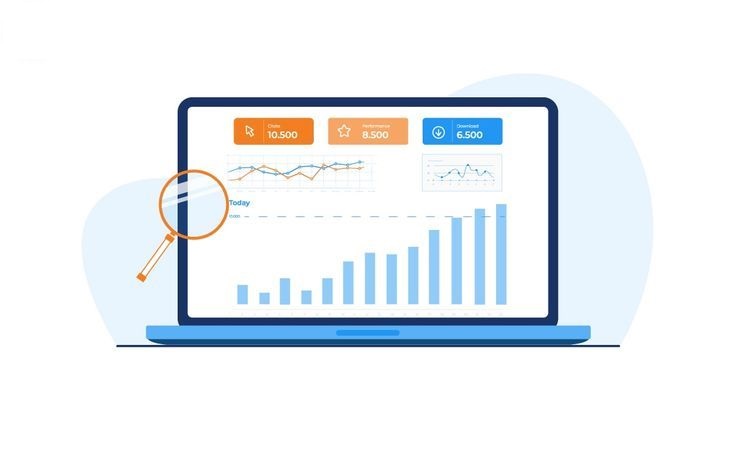
An SEO-optimized website does more than just exist in the vast online space; it actively ascends in search engine rankings. This rise translates to an increased influx of visitors to your site, which is essential for broadening your company’s reach. With more traffic comes the potential for generating new leads and closing more sales.
In essence, having an SEO friendly website opens a new channel for potential customers to discover and engage with your brand. This not only increases visibility but also offers a strategic platform for attracting and converting potential clients. It’s an investment in your digital presence that yields tangible results in customer engagement and business growth.
Enhances Brand Credibility

Imagine your website gracing the first page of search engine results. This achievement is more than cosmetic; it profoundly influences consumer perceptions of your brand. A top-ranking position on search engines naturally fosters trust among visitors, as they view your website as a leading authority in your field.
This impact extends beyond your immediate audience. Search engines recognize and reward the credibility you’ve built, reinforcing your digital authority. This dual benefit strengthens your brand’s presence in the competitive online arena, enhancing your reputation and trustworthiness in the eyes of both consumers and search algorithms.
Also Read: What is Organic Marketing – Everything You Need to Know
Cost-Effective
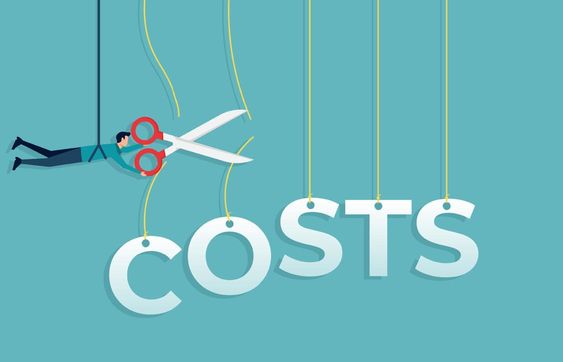
In the realm of digital marketing, SEO is a standout for its cost-effectiveness, a significant advantage in an environment where every click can come at a high cost. Unlike other marketing strategies that require substantial advertising budgets, optimizing your website for search engines is a wise and economical investment. This strategy enables businesses to increase website traffic, generate valuable leads, and grow revenue streams without depleting their financial resources.
The true value of SEO lies not just in reducing costs but in the smart allocation of marketing budgets. By focusing on search engine optimization, businesses can avoid unnecessary expenses while strategically investing their resources. This approach balances budget considerations with maximum effectiveness, offering a sustainable and efficient way to boost online visibility and drive business growth.
Increases User Experience

An SEO-friendly website transcends the goal of just satisfying search engine algorithms; it’s a harmonious blend of elements that enhance the overall user experience. Envision your website as a well-organized, user-centric space with rapid loading times. This vision is not just a desirable feature for users; it’s a strategic approach to maintaining their interest and engagement.
The more effectively users engage with your site, the higher the probability they will convert into paying customers. This approach is akin to offering a digital warm welcome, creating an inviting and conversion-friendly environment. In essence, your website becomes a digital ecosystem designed to attract, retain, and guide visitors toward becoming loyal customers.
Tips for Creating an SEO Friendly Website
Use Responsive Design to Reach Out to All Device Users
Predicting which devices customers will use to access your website in the diverse digital landscape can be a challenge. With the expectation that smartphones will dominate over half of all searches by 2020, having a responsive design is not just advantageous but essential for online success.
Responsive design is particularly crucial for an SEO friendly website. It ensures that your website automatically adjusts to different devices, aligning with user search trends. This means visitors experience the best version of your site, whether on a tablet or a laptop.
Responsive design addresses the variations in screen sizes and resolutions across devices. It enables your website to adapt fluidly, significantly improving user experience. This flexibility allows users to effortlessly navigate your site, regardless of their device.
The key goal is to keep users engaged on your site for longer durations, signaling to search engines like Google that your site is not only adaptable but also offers a high-quality user experience. If users face navigation issues, they might turn to a competitor’s more user-friendly site. Moreover, aligning responsive design with user search intent can enhance your chances of achieving higher rankings on Google.
Also Read: 13 Best SEO Keyword Research Tools and Their Benefits in 2023
Incorporate Keywords Into Your Website Content
Understanding the importance of high-quality content is crucial; it’s the foundation that attracts visitors and converts them into leads. Your website’s content not only draws visitors but also establishes your authority in your market.
To maximize this potential, align your content with relevant keywords. Keywords act as a conduit between your content and user searches. Conduct comprehensive keyword research to identify both high- and low-competition keywords in your niche. This research helps you understand the competitive landscape and assess the value of each keyword for your content strategy.
Long-tail keywords – phrases containing several words – are particularly valuable. They target a more specific audience, increasing the chances of attracting qualified leads. For example, using a phrase like “top-rated car insurance company in LA” targets readers specifically interested in that subject, enhancing lead quality.
After identifying target keywords, decide on the most suitable content format, whether it be infographics, videos, blogs, or ebooks. Your choice should align with your marketing goals and appeal to your audience.
When creating content, it’s essential to seamlessly integrate keywords while ensuring the content is informative and user-friendly. Strategic use of keywords improves your web pages’ visibility on Search Engine Results Pages (SERPs), making it easier for users to find your content.
In summary, the right keywords not only boost your content’s SEO value but also enhance the performance and visibility of your web pages, increasing your website’s overall effectiveness.
Improve Header Tags
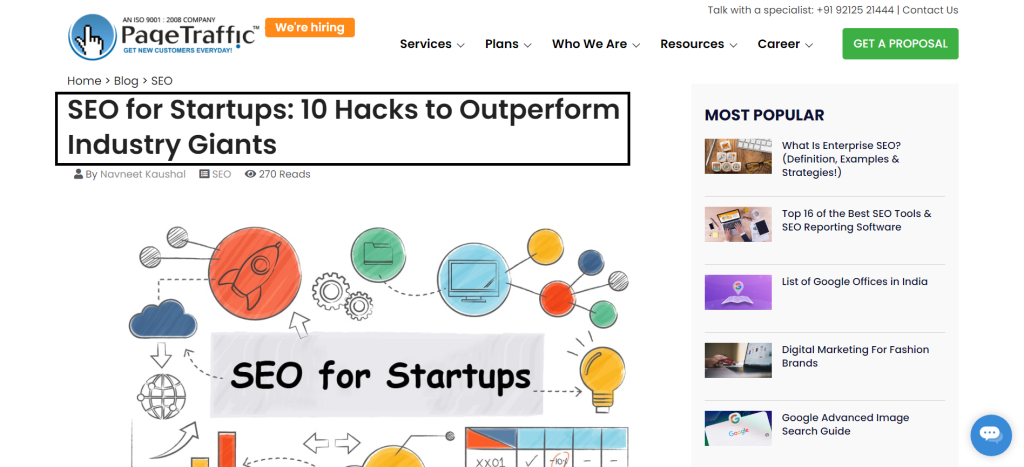
Header tags are the structural elements of your content, guiding search engines through the hierarchy of your information.
Optimizing header tags means refining your content to be more search-engine-friendly, balancing SEO requirements with readability for human users.
Each header tag, from H1 for main titles to H3 for subsections, provides a clear structure, similar to a well-organized book with appropriately labeled chapters and sections.
Incorporating key phrases into your headers, especially the title, aids search engines in understanding your content’s context, enhancing the likelihood of accurate indexing. Beyond primary keywords, the inclusion of secondary, LSI (Latent Semantic Indexing), or long-tail keywords in smaller headers like H2 or H5 adds depth to your content, informing search engines about the breadth and detail of your topics.
In essence, optimizing header tags is a strategic effort to enhance your content’s accessibility, relevance, and visibility online, ensuring it is both discoverable and easy to read.
Avoid Duplicate Content
Duplicate content occurs when large sections of text are repeated across multiple websites. Some instances involve strikingly similar content, while others are exact word-for-word replicas.
This practice is not just unethical; it’s often mistakenly used to try to increase website traffic. Search engines face the challenge of deciding how to treat such similar content in search results, which can lead to fewer visitors to the implicated website.
To mitigate the risks of duplicate content, consider these strategies:
- Ensure Original and High-Quality Content: Focus on creating original and high-quality content. This approach not only addresses duplicate content concerns but also improves user experience.
- Use 301 Redirects: Implement 301 redirects, or “RedirectPermanent,” to direct users and search engines to the correct pages. This helps maintain smooth traffic flow and ensures that search engines index the right version of your content.
- Understand Your CMS: Get to know your Content Management System (CMS). Understanding how your CMS works can help you see how different pieces of content are linked, making it easier to spot and fix duplicate content issues.
- Maintain Consistent Internal Linking: Internal linking is key. Ensure consistency in your linking structure to provide clarity for users and search engines, aiding in navigation and helping search engines understand the hierarchy and importance of your pages.
By adopting these methods, you can minimize the risks associated with duplicate content and boost your website’s effectiveness and search engine visibility.
Enhance Your Meta Descriptions to Increase Clicks
When conducting a Google search, the first thing that catches your attention is the title of the result pages. Immediately below the title is a brief summary that previews the page’s content. This summary, known as the meta description, acts as a short introduction.
For instance, consider the query “how to build a gaming PC.” The top result might feature a meta description like: “Ever wanted to build your own PC? Our step-by-step guide and brief training videos are here to help you construct a gaming/streaming PC.”

This meta description is effective due to its conciseness and clarity. It provides users with a clear idea of what to expect before they click the link.
To maximize the impact of your meta descriptions, ensure they are relevant and concise. Include a targeted keyword to improve the page’s ranking. Remember, Google SERPs typically limit meta descriptions to 155 characters.
Keeping your description under 150 characters avoids truncation, preserving the integrity of your message and ensuring clarity for the reader. This approach ensures that your meta description is not only informative but also complements the user’s search experience.
Concentrate on Improving the Readability of Your Content
When optimizing your website for search engines, the readability of your content is as crucial as its visual appeal. A website with stunning design but poorly presented content won’t deliver value if the content isn’t engaging and easy to digest.
In developing an SEO friendly website, remember the human element. Google favors sites that meet user needs and provide a great user experience, making readability a key component of your SEO strategy.
Consider your content’s typography in relation to your website’s design. Opt for a font size that’s easy to read and use different font colors strategically. For instance, make anchor text stand out with a contrasting color.
Headers and subheadings should have a distinct font size difference from the main text. Avoid hard-to-read color combinations like light yellow font on a white background. Also, differentiate subheadings from the main text to avoid confusion.
Break up long paragraphs, catering to readers with short attention spans. Enhance readability by using bullet lists and points, presenting information in a digestible format.
Infographics are a valuable addition, summarizing complex information and presenting it in a visually appealing, easily understandable way.
Boost Page Load Time
Enhancing your website’s loading speed refers to reducing the time it takes for web pages to fully load. This is vital as users expect quick access to content, and slow-loading pages can lead to frustration and abandonment.
Page load speed directly affects user experience. Studies indicate that users typically wait 5-6 seconds for a page to load. After that, impatience sets in, and they may leave, increasing your site’s bounce rate.
Consider a potential customer interested in your offerings. If they encounter a slow-loading page, their frustration might lead them to seek faster alternatives, resulting in a lost opportunity and a higher bounce rate for your site.
Search engines interpret a high bounce rate as a sign that your site isn’t meeting user needs, potentially harming your search rankings.
An SEO audit is like a health check for your website, identifying factors that slow it down, from oversized images to server issues. Addressing these issues improves user experience and sends positive signals to search engines, enhancing your site’s SEO.
In essence, improving your site’s load speed is crucial for keeping your audience engaged and maintaining a strong online presence, respecting your users’ time and boosting your competitive edge in the digital world.
Answer to Comments
Engaging actively with your audience on your website and social media platforms is crucial. Consistently responding to comments demonstrates genuine interest in understanding and addressing your consumers’ needs, and it shows a commitment to enhancing their experience with your brand. This proactive engagement not only highlights your attentiveness but also emphasizes your dedication to continuous improvement.
Conclusion
Now that you understand how to create an SEO friendly website, it’s time to apply these insights and elevate your online presence. Given the complexity of various SEO elements, partnering with an experienced agency like Infidigit could be transformative. Contact us to learn more about our services and how we can help optimize your website for peak SEO performance.
Remember, demonstrating the effectiveness of your SEO strategies with meaningful data is crucial for long-term success.
FAQs
How can I increase my website’s loading speed?
Improve your website’s loading speed by optimizing images, enabling browser caching, reducing HTTP requests, and considering a content delivery network (CDN) for quicker content distribution.
Are backlinks still necessary for SEO?
Yes, backlinks remain a key component of SEO. Quality backlinks from reputable sites can boost your website’s authority and improve its ranking in search engine results.
What role do sitemaps play in SEO?
Sitemaps are essential for helping search engines understand your website’s structure and more efficiently index its content. Adding a sitemap can significantly enhance your website’s SEO effectiveness.
How can I conduct keyword research for my website?
Use keyword research tools to find terms relevant to your niche. Focus on long-tail keywords, understand user intent, and integrate these keywords naturally into your content to achieve organic optimization.
